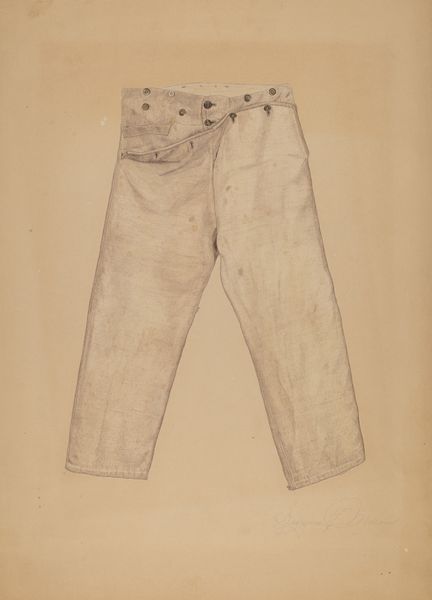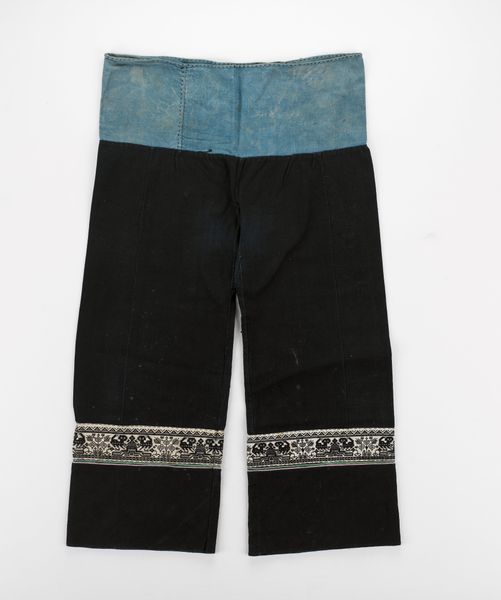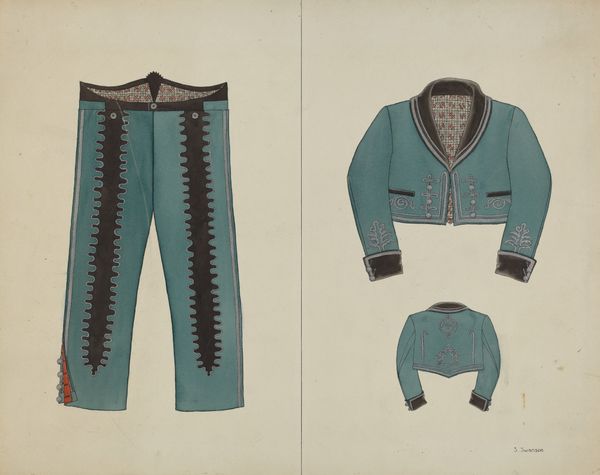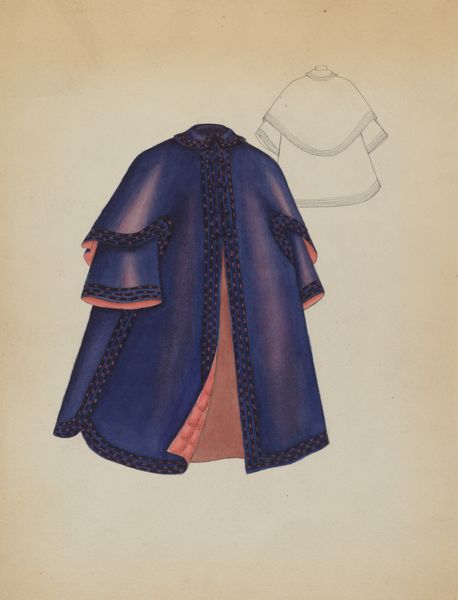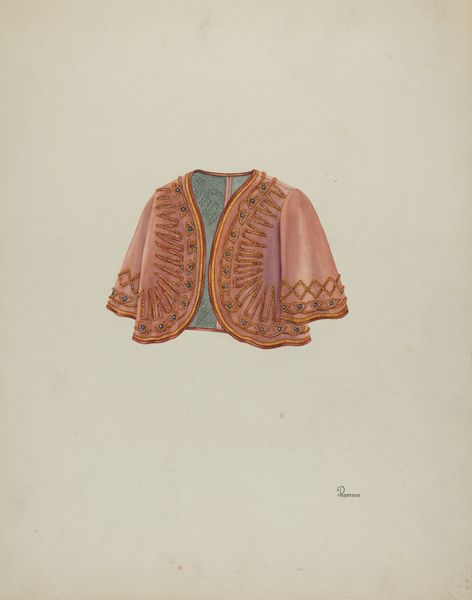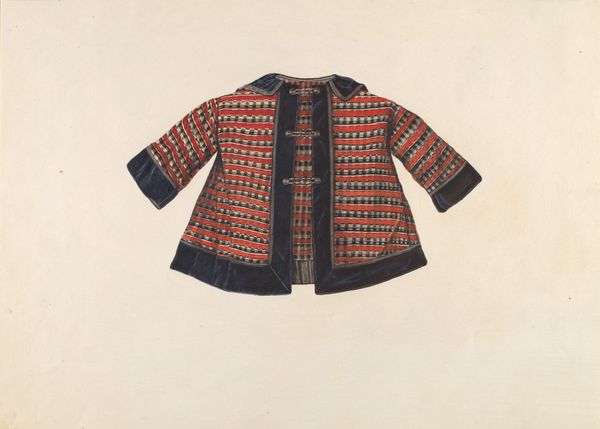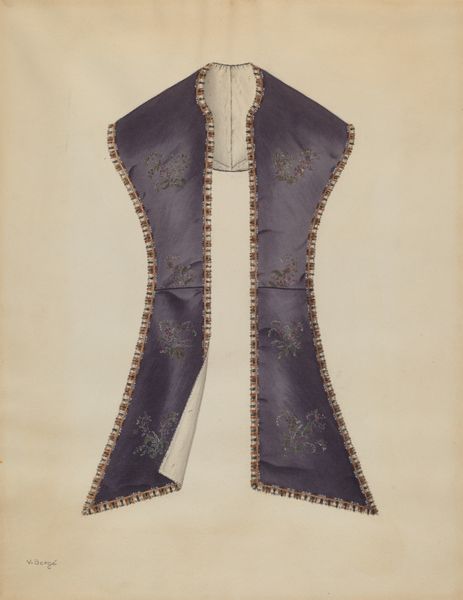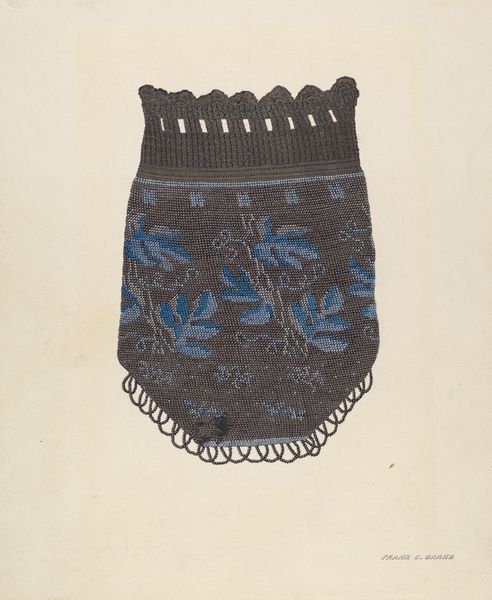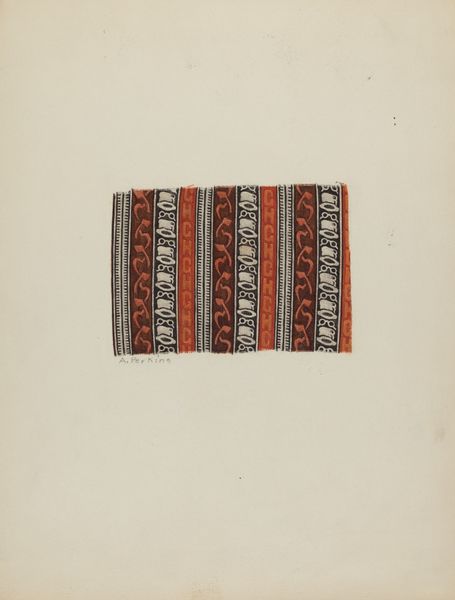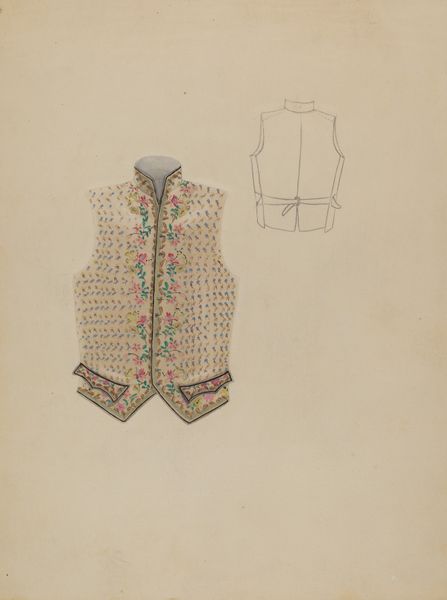
drawing
#
portrait
#
drawing
#
male fashion
#
fashion mockup
#
historical fashion
#
clothing photography
#
clothing theme
#
sportswear sale photography
#
clothing photo
#
nostalgic styling
#
fashion sketch
#
clothing design
Dimensions: overall: 35.6 x 27.4 cm (14 x 10 13/16 in.)
Copyright: National Gallery of Art: CC0 1.0
Editor: Here we have Syrena Swanson's "Man's Trousers" from around 1937, rendered as a drawing. What strikes me most is the almost theatrical attention to detail in what seems like a simple garment. What do you make of this piece? Curator: As a materialist, I'm drawn to the depiction of the trousers themselves. It compels me to ask about the process behind this design. It's not just a picture; it represents potential labor and resources. These aren't just "trousers"; they're a testament to craft. What socioeconomic bracket were these aimed towards? Editor: That's a good point. The detailed trim does suggest some level of luxury or at least aspirational style. Given the date, could this reflect influences from global fashion trends trickling down to ready-to-wear, perhaps even during the Depression era? Curator: Exactly! We have to consider the social context of production. Were these trousers meant for mass production or bespoke tailoring? How would the labor practices differ in each scenario? The very concept of “fashion” here speaks to the means and scale by which this design could impact wider consumerism. This makes one rethink the traditional value placed on "high" art, as distinct from design. What are your thoughts about where “high art” sits when you consider materialist ideology? Editor: I never considered the social impact a drawing of pants might have had, especially at a time when social classes were in turmoil and global production faced considerable restraints! Thank you for showing me the impact of what some might consider common materials and the class constraints for “high art.” Curator: Precisely! "Common" becomes very uncommon when filtered through lenses like labor and class. Considering the materiality gives a unique access point when critiquing the history of fine art.
Comments
No comments
Be the first to comment and join the conversation on the ultimate creative platform.
